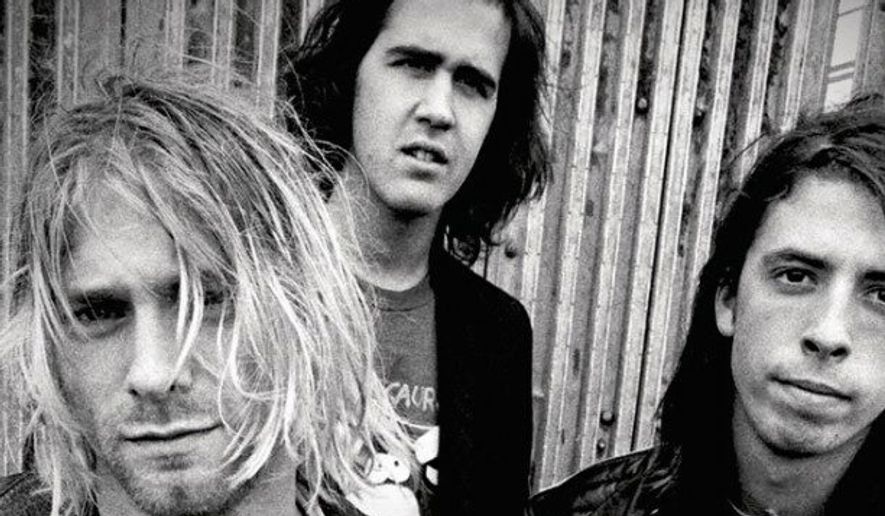Kurt Cobain’s suicide ended Nirvana’s all-too-brief story in April 1994, but fascination with the band at the forefront of the 1990s Seattle grunge scene remains as high as ever. The trio’s career has been dissected so intensely, so often that surviving members Dave Grohl and Krist Novoselic are wary of picking at the carcass.
Yet little was known about Nirvana’s formative years until the compendium “I Found My Friends: The Oral History of Nirvana” by Nick Soulsby, an avowed Nirvana fan since the age of 13, hit bookstores this spring.
“I wanted to know what it had been like living in that world and sharing the life of Nirvana as a band,” Mr. Soulsby, who is based in England, said in an email. “I felt that might make the band seem easier to comprehend, more human, more something you or I could bare witness to without being blinded by starlight and halos.”
With no training in journalism — Mr. Soulsby works for a British tech firm — he went undaunted in his task. He tracked down early band members Aaron Burckhard, Chad Channing and Dave Foster, who played drums in Nirvana before Mr. Grohl.
“I tried to speak to the guys who were part of Nirvana before it was ’Nirvana,’” Mr. Soulsby said. “[Mr. Foster] had a rough ride from biographers. I was honored he was willing to help me.”
Describing previous biographies of his favorite band as “one-dimensional,” he was motivated to “start digging” beyond interviews with high-profile Seattle bands like Soundgarden and Pearl Jam that came up at the same time as Nirvana.
By Mr. Soulsby’s count, he logged about five hours of sleep a night between his research, his writing and his day job — not even knowing whether the result would result in a book deal.
To make things more difficult, many of his hoped-for subjects were press-shy.
“I’d reassure them my only desire was to listen,” Mr. Soulsby said. “I didn’t have an outcome in mind. I just wanted to know what it had been like to share the stage with Nirvana, to rub shoulders with a band that became a legend.”
His eagerness and tenacity won over many. Initial contacts led to more contacts, and more still. Mr. Soulsby spoke with members of some of the 234 bands that performed with Nirvana from 1987 to 1994.
He made several trips to the Pacific Northwest, which he described as “the friendliest place I’ve ever been. People up there make the British look so impolite.” He popped by the Community World Theater, where the band played most often in its salad days. He even met with one of Cobain’s uncles.
“Meeting some of them brought me face to face with Cobain as someone his former friends still cry about if they dwell too deeply,” Mr. Soulsby said of the musician’s social circle. “I saw people shed a tear for a guy I’ve only ever seen on a screen or in a photograph.”
After getting input from members of The Dwarves, Yellow Snow, Black Ice and other bands, Mr. Soulsby knew that, to make his history comprehensive, he would have to go after bigger names, who have “PR experts and managers to keep plebs like me away.”
One of his most intriguing sources was B Real of the rap group Cypress Hill, who had shared the billing of an MTV “Live and Loud” show with Nirvana in late 1993.
“What he most recalled was Cobain ’ghosting’ through the place, clocking in for the gig and kicking out the songs, then disappearing — no socializing, no spending time with his bandmates, the people there from MTV, the press, the other bands. Cobain just cut it all off.
“In his suicide note, Cobain said something about feeling he needed a punch-in time clock before he walked out on stage,” Mr. Soulsby said. “As far as I can tell, he’d been treating live performance like a heinous production line chore for at least a year. That impression of a guy who wanted as little as possible to do with the lifestyle of a successful band came across loud and clear.”
Cobain’s downward trajectory is amply related in “I Found My Friends,” many of whose subjects watched the singer/guitarist’s descent into drug addiction and depression intensify in the months before his suicide. Mr. Soulsby spoke with studio musician Eric Erlandson about Cobain’s final jam sessions and Youri Lenquette, the last man to formally photograph the trio together.
“I kept trying to find people who were there at unique moments and just tried to let them tell their own tales and share their own thoughts,” he said, adding that asking people to recall events from 25 years ago is essentially “reaching the limits of memory.”
While assembling his manuscript, Mr. Soulsby lost his grandfather and his father — losses that “made me focus … reminded me I wasn’t writing about a historical figure. … I was writing about someone as real to the people I spoke to as your friends, colleagues and family are to you. Making it real, that seemed precious.”
Mr. Soulsby said some of his new friends will be handing copies of “I Found My Friends” to Mr. Grohl — now frontman of The Foo Fighters — and Mr. Novoselic, both of whom he did not interview.
“I’ve just got my fingers crossed the guys take a look and read something that feels right to them,” he said.
“Day after day these past years, I’ve asked myself whether I’m doing the right thing by a band I adore,” Mr. Soulsby said. “I don’t think there’s a perfect answer, but that uncertainty kept me trying to aim for a result that wasn’t just ’another book.’”
• Eric Althoff can be reached at twt@washingtontimes.com.




Please read our comment policy before commenting.